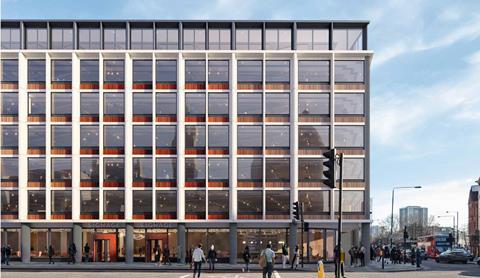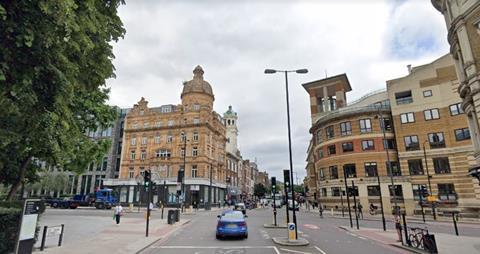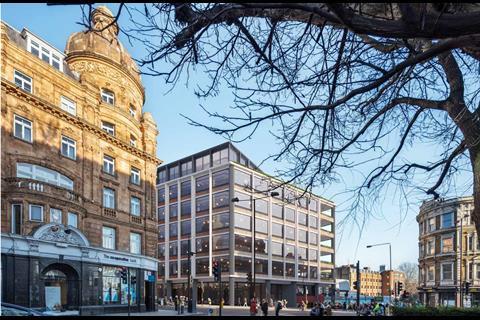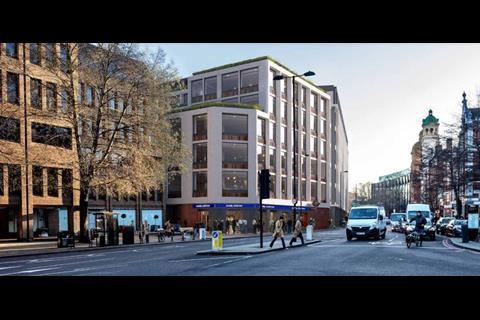Campaigners sound alarm over proposals for Rock Townsend’s postmodern 1980s Angel Square scheme
AHMM has submitted proposals to radically rework Rock Townsend Architects’ postmodern Angel Square office development in Islington, north London.
铁狮门钟楼是上世纪80年代开发的地标性建筑,按照该公司的计划,钟楼和建筑的砖外墙将被拆除,以玻璃为中心进行改造。该开发项目距离上世纪80年代的天使大楼(Angel Building)仅一步之遥,该大楼的再开发项目使AHMM在2011年入围斯特林奖(Stirling Prize)。
Angel Square’s current three blocks provide 14,549sq m of office space and a pub, on the corner of Torrens Street and City Road. The building also includes the entrance to Angel Station on London Underground’s Northern Line.
AHMM’s proposals would reconfigure the buildings, the highest of which is six storeys, to deliver 21,701sq m of new office space, 255sq m of new retail space, and retain the pub.
Work would include adding two extra storeys to the building and infilling the existing courtyard at the centre of Angel Square. Documents submitted to Islington council said no work to the Underground station was proposed as part of the application, however they said discussions were under way over potential upgrades to the appearance of the station.

US property investment firm Tishmans bought Angel Square from developer Derwent London last summer for a reported £86.5m. The firm counts New York City’s Rockefeller Center among its holdings, and owned Alison and Peter Smithson’s Economist Plaza in St James’s – now known as Smithson Plaza – until January last year.
AHMM said the Angel Square project would regenerate an existing building that had significant elements reaching the end of their intended design life, “transforming and re-imagining the building as a piece of exemplar architectural and sustainable design”.
The practice’s design and access statement said the makeover would “create a new identity” for the prominent site, at the junction of Upper Street and City Road, establishing “architectural quality” at the same time as respecting the area’s townscape and “heritage sensitivities”. The grade II-listed former Angel Hotel, which sits on the opposite corner of the junction, is one example.
It added that retaining the building’s original ribbed reinforced-concrete frame would save a significant amount of embodied carbon and ensure that the development’s whole-life use of carbon is minimised.
AHMM said the Angel Square project would replace the building’s existing “carbon-intensive” capital plant with a new all-electric system, complemented by sustainable energy generation, water storage and operable ventilation panels to aid natural ventilation, creating space.

Campaign group the Twentieth Century Society said it would object to the proposals and called on Islington council to locally list Angel Square as a non-designated heritage asset.
It said that while the current plans would retain the underlying structure of the building, they would still see the complete removal of the brick and stone facade and all decorative elements, with the resulting demolition having a “significant “environmental impact.
The group said that pre-application consultation documents on the proposals had outlined issues such as a “tired interior” and “inefficient layout” with the existing Angel Square buildings, but little effort appeared to have been put into looking at how they could be upgraded.
“该提案没有探索任何机会,对建筑进行更低调的重新配置,以解决这些问题,在必要的时候升级服务和现代化的热低效结构,同时尊重建筑的遗产价值,”它说。
It urged Tishmans and AHMM to “pursue a more sympathetic and sustainable scheme”.


























10Readers' comments